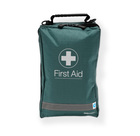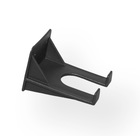Common Coastal Water Dangers
Unlock This Video Now for FREE
This video is normally available to paying customers.
You may unlock this video for FREE. Enter your email address for instant access AND to receive ongoing updates and special discounts related to this topic.
Staying Safe in UK Coastal Waters
Dangers and Hazards
The UK is surrounded by over 7,000 miles of coastline, offering various leisure activities but also presenting certain dangers.
Rip Currents
Definition: Strong currents flowing away from the shore, common in UK coastal waters.
Precautions: Swim only in designated areas with lifeguards and avoid swimming against rip currents.
Water Sports Hazards
Injuries: Cuts, grazes, broken bones, and head or spinal injuries are common.
Jellyfish Stings
Identification: Typical marine creatures in UK coastal waters.
Treatment: Rinse affected area with vinegar immediately to neutralise stingers; seek medical attention for severe stings.
Hypothermia Risk
Cause: Dropping core body temperature, especially in cold coastal waters.
Prevention: Wear suitable protective clothing like wetsuits and limit exposure to water when feeling cold or shivery.
Sea Creature Encounters
Risks: Bites or stings from sharks, seals, and sea urchins, though rare.
Action: Stay calm, swim back to shore slowly if encountering sharks or seals; remove sea urchin spines and seek medical help for severe stings.



_-Trauma_8x100_CE.jpg)



